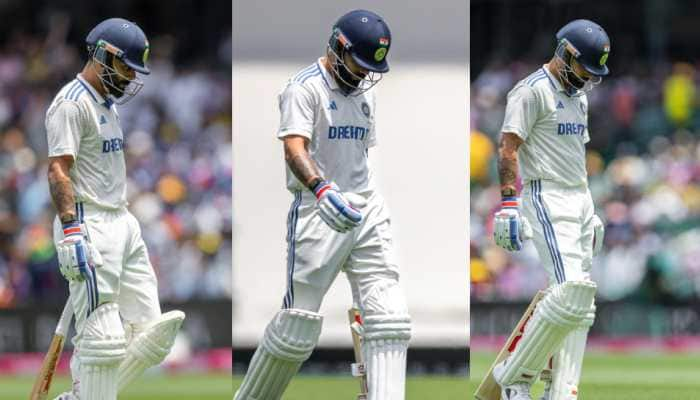The Taliban make their moves
Afghanistan watchers fear that the current trends in the violence in that country would make 2013 as violent as 2011, which was the most violent since 2001.
Trending Photos
)
New Delhi: Afghanistan watchers fear that the current trends in the violence in that country would make 2013 as violent as 2011, which was the most violent since 2001. This has been mostly the result of the spring offensive codenamed ``Khaled bin Walid`` announced by the Taliban on April 27.
In any case, even the winter months had seen continued violence as the U.S. and NATO forces began to withdraw their troops prior to 2014, including at time from places where the Afghan troops were not ready or equipped to take over responsibilities.
The Taliban had threatened that the offensive would be massive and May was a horrible month all over Afghanistan. Seven soldiers with NATO were killed in two violent incidents in early May in the Farah province, including five American soldiers in the Kandahar province.
Later in the month a suicide bomber struck in the Baghlan province killing 14 and injuring 9 as he successfully targeted Rasool Mohseni, the head of the Baghlan provincial council and a veteran commander who had led a Northern Alliance revolt against the Taliban.
A terrorist attack on May 17 targeted a gated community partly developed by President Karzai’s brother Mahmod in Kandahar killing 9 and wounding 70. The Taliban followed this up by killing a district official in Farah province, six policemen in Helmand while a bomb blast killed a border police officer and wounded eight others in Khost on the week ending Friday-Saturday May 18. Six personnel of the Afghan Public Protection Force were killed in a bomb explosion in the Herat province on May 21 and the Taliban were suspected to have planted the roadside bomb.
There were the two other high profile attacks in Kabul and one in Jalalabad on the office of the International Committee for Red Cross on May 29, made their intentions and abilities very obvious. The Taliban followed this up with another massive assault in Kabul on June 11 in a deadly attack on a commuter bus close to the Supreme Court that killed 17 civilians and wounded about 40. This attack had been preceded by an attack with fire rockets on Kabul airport that lasted several hours but only the attackers were killed.
It is estimated that there were 15 suicide attacks in May targeting government installations, military convoys, NGOs and public places. Nine terrorist attempts were foiled but there were two insider attacks targeting the ISAF and the Afghan National Police (ANP). 26 ISAF soldiers were killed in the suicide attacks.
There are other aspects about the rapidly evolving situation as the ISAF and US forces begin their draw down and leave wide spaces to the ANSF. The world pays attention to the high profile attacks in major cities or against ISAF targets but misses out or even disregards the daily incidents in the remote parts of Afghanistan as the Taliban get more active. Also, the violence is not just about attacks against the foreign ``occupying forces`` but is becoming a struggle between two or more indigenous forces vying for power.
There have been bombings and suicide attacks in different parts of the country from November 2012 onwards. These attacks were in Wardak, Nangarhar, Nuristan, another attack on CIA Camp Chapman in Khost, an ANA base and another against British patrol base, both in Helmand, the district centre in Kunduz, with simultaneous bomb explosions in Jalalabad, Logar and Kabul in February 2013, ANA posts in Kunar and in Jawzjan in April.
The geographical spread would indicate the extent of penetration of the Taliban forces in Afghanistan. Many of these attacks in the rural areas attracted little notice internationally, while the noticeable feature of the spring offensive has been that the attacks on ANSF and international forces had increased with attacks in Helmand, Farah, Kandahar, Ghor, Paktika and Herat provinces during May.
All the attacks that have been taking place in the past few months have not been the handiwork of the Taliban. The Haqqani Network, apart from the Taliban has continued its activities in Kabul. The former American Chief of Staff had described the Haqqani Network quite accurately, as virtually an extension of the ISI.
Further, Gulbuddin Hikmetyar’s Hizbe Islami has been a long time favourite of the Pakistan army. The HIG now senses or aspires to a larger political role for itself post 2014 as a member of the Afghan parliament while becoming militarily active as well. It claimed responsibility for two bomb attacks in Kabul in September 2012 and another one in May this year. Meanwhile, Hikmetyar realises that his group has weakened and splintered in the decade gone by and the only recourse to him is to announce he would contest elections next year and hope to gather his flock back. He also has to exhibit military prowess to impress the government as also his hardliners. The Taliban and HIG insurgents have also been attacking civilians, despite promises not to do so.
Another trend this year has been that Taliban have attacked in large numbers with the attacks carried out by massed groups, up to several hundreds. The idea is to hold territory (as they had done in 2006-07) and establish fortified positions which can be dislodged only with massive retaliation. It is feared that the ANSF may not have this air strike capability, firepower and mobility after the US and ISAF forces depart.
There have been heightened Taliban activities in to the northern provinces like Faryab, Baghlan, and Kunnar. In Faryab, for instance, there were almost daily clashes between the insurgents and the ANSF. Baghlan, close to Kabul, may soon become a stronghold of the Taliban.
A different kind of Taliban insurgent is now becoming active. The role of Pakistan in giving shelter and training has been well known but there is a change in the kind of Talibanised terrorist who is now being turned out from training camps in Punjab and at places like Mansera near Abbotabad in the Khyber Pakhtunkhwa province.
The Harkat -ul-Mujahedeen along with Pakistani agencies had operated camps here in the past and trained jihadis were sent across into Afghanistan. The current lot who graduate from these schools in the Punjab are trained to operate in the field as eyes and ears of their Pakistani trainers. They are imparted military education, taught basic English and IT, and trained to operate while undercover of a normal Afghan existence. Such individuals are the interface between the Taliban commanders and their Pakistani handlers.
The syllabus of the Mansera training centres is different. As the insurgency in Afghanistan has developed so have the training institutes churning out new graduates. The alumni from Mansera are trained to control the Taliban units inside Afghanistan, not be dependent on the desires or ambitions of the local commanders who might be competing among themselves, and to function as administrators and commissars of Taliban units. Some selected individuals are also given Pakistani passports and are kept beholden to their new masters.
Pakistan is preparing for life after 2014 where it hopes to exercise control through the Quetta Shura loyalists, the Haqqani Network and trained Afghan Taliban for exercising watch and remote control. The current demand by clerics and some political parties in Pakistan that the US should stop the drone attacks will only benefit the Taliban and in effect, Pakistan.
The views expressed in the above article are that of Mr. Vikram Sood, Vice-President, Centre for International Relations, Observer Research Foundation.
ANI
Stay informed on all the latest news, real-time breaking news updates, and follow all the important headlines in india news and world News on Zee News.
Advertisement
Live Tv
Advertisement







)
)
)
)
)
)
)
)
)
)
